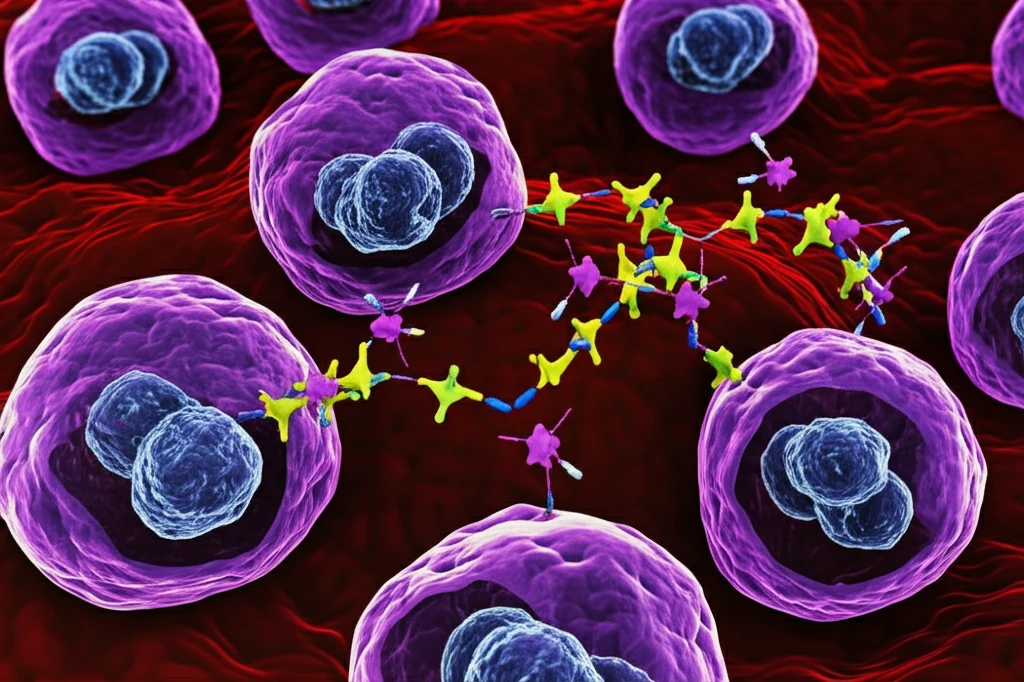
S100A8: The Unexpected Key to Squamous Cell Carcinoma Differentiation
"Discover how S100A8 protein plays a vital role in cutaneous squamous cell carcinoma, opening new avenues for targeted treatments and improved outcomes."
Cutaneous squamous cell carcinoma (SCC) is a prevalent type of non-melanoma skin cancer, arising from the epidermal keratinocytes. As one of the most common cutaneous cancers among older adults, understanding its development and potential treatments is crucial. Most SCC cases evolve from precursor lesions such as actinic keratosis (AK) and Bowen’s disease. Actinic keratosis, in particular, is often the initial lesion that progresses into invasive cutaneous SCC.
S100 proteins are a family of cytoplasmic Ca2+-binding proteins, exhibiting differential expression across various cell types. These proteins are found in neutrophils, monocytes, and macrophages, and are released upon phagocyte activation. S100A8, also known as calgranulin A or migration inhibitory factor-related protein 8, is a member of the S100 protein family and often forms heteromeric calprotectin with S100A9. While S100A8 and S100A9 typically form heteromeric protein complexes, individual S100 proteins can also have distinct functions.
Recent research has highlighted the association of S100A8 with various malignant disorders. Genomic abnormalities in the chromosomal region 1q21, where many S100 genes are clustered, are frequently observed in epithelial cancers, including lung, breast, colorectal, and liver cancer. Differential S100A8 expression has also been noted in numerous neoplastic diseases. In tumors of glandular cell origin, S100A8/A9 expression correlates with poor cell differentiation. However, there remains limited research on S100A8 expression in cutaneous SCC and its relationship with cancer cell differentiation.
The Role of S100A8 in SCC Differentiation

A recent study investigated the differential expression of S100A8 in premalignant AK and cutaneous SCC, aiming to evaluate its role in cultured SCC cells through an adenoviral gene delivery system. The study demonstrated that S100A8 regulates cutaneous SCC differentiation and promotes well-differentiated SCC formation by modulating differentiation-related proteins. This groundbreaking research offers new insights into potential therapeutic strategies for managing SCC.
- S100A8 overexpression in SCC cells increased the expression of differentiation markers like loricrin, involucrin, and filaggrin.
- S100A8 also significantly increased loricrin and involucrin luciferase activity.
- These findings indicate that S100A8 regulates cutaneous SCC differentiation and promotes the formation of well-differentiated SCC in the skin.
The Future of SCC Treatment
In conclusion, this research confirms the significant overexpression of S100A8 in cutaneous SCC and indicates its role in inducing cancer cell differentiation, leading to the formation of well-differentiated SCC in the skin. S100A8 may play a key role in the development of less aggressive, lower-risk cutaneous SCC, characterized by reduced rates of recurrence and metastasis compared to SCCs from internal organs. Further investigations are essential to fully elucidate the molecular mechanisms of S100A8 in cutaneous SCC pathogenesis, potentially paving the way for new therapeutic interventions.
